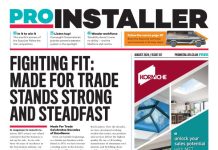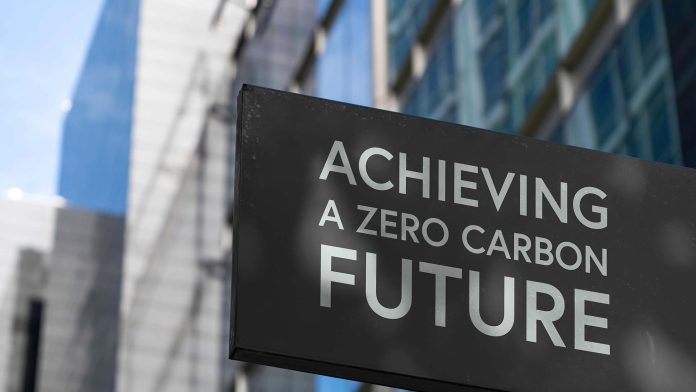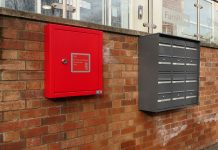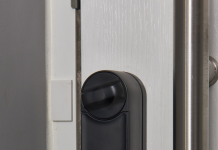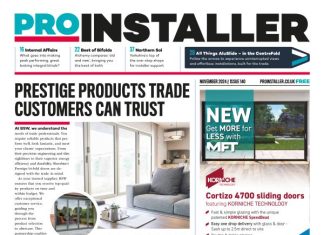by Phil Slinger – CAB Chief Executive
To support members through the changes that took place to Approved Document L (AD L) of the Building Regulations in 2022, CAB produced a Guidance Note which details the changes in thermal insulation across the devolved Parliaments of the UK, this document has now been made available to non-members via the CAB website. Whilst our members and the wider industry have now got to grips with the 2022 changes to Approved Document L, we need to turn our focus on the next change to AD L where the Government is asking for an even greater leap in thermal efficiency which is planned to be introduced in 2025.
The Government is keen to ensure we begin to build carbon neutral homes from 2025, but new homes built now and in the future will only equate to a total of 20% of our building stock by the governments 2050 target. This means that refurbishment of existing building stock will be crucial to getting more of our buildings carbon neutral by 2050. But, when replacing just windows and doors, does it make sense to install high performance windows and doors into a structure which does not meet the same standards? Importantly, does the reveal for the installation offer good insulation as cold bridging at this junction with the structure can have a significant negative effect on a new products thermal performance?
Whilst we applaud the speed of the move to ensure new buildings are constructed to good, overall carbon neutral standard, does it make sense to ‘piecemeal’ the refurbishment of our existing building stock? LETI emphasises that poor interfaces with the structure will compromise any potential thermal improvement if the building is not treated as a whole. Would it not be better to ensure that any replacement products, such as windows and doors, have a positive building thermal improvement overall, which in turn will reduce energy consumption? Should we be tackling the thermal improvement of window and door reveals as part of the ‘home improvement’ installation as this will certainly be needed when the building fabric is further insulated to meet carbon neutrality which may mean that the ‘new windows’ fitted into the existing structure will need to be removed, or even changed again?
Several CAB members already have cited examples of building refurbishment using thermally improved window systems, not necessarily of the highest performance, but when linked with structural thermal insulation taking a whole building approach, shows that payback of the improvements can be realised in a few years in energy savings. Could this be an alternative route to achieving carbon neutrality by 2050?
Looking at the latest Government initiative for improving our existing building stock, ECO+, the scheme does not include grants to upgrading of old windows? Whilst a twenty year old boiler should be replaced for improved efficiency, so too must double glazing which is twenty years old. Again, should we not be looking at taking a whole building approach to thermal improvements in our building stock? Legislation recently announced in Scotland is that the Scottish Government is to push through legislation to ensure that all new homes built in two years time are built to a Passivhaus standard, or a Scottish thermal efficiency equivalent. LETI states that building to a Passivhaus standard increases costs for new build by only 5% to 10% over current regulation construction, which should prove affordable as energy savings will cover the increased costs.
Looking even further into the future, should we be satisfied with just building to carbon neutrality? There is much talk on social media at the moment that we should be aiming higher for our new build, where buildings should be ‘carbon positive’, that is to say to create an environment benefit and intentionally remove carbon dioxide from the atmosphere, which will help to reach the overall carbon neutrality for all our building stock.
Unlike some other materials, aluminium profiles are easily produced, as dies to extrude aluminium are relatively cheap and simple to design. Thermal break technology has also improved greatly in the last few years and high performance windows are already available to meet the most stringent thermal insulation requirements. A simple review of the UK’s Passivhaus Trust website shows that of the thirteen Passivhaus certified window systems available in the UK, five are aluminium systems, four are PVC systems, and four are timber based systems. As far as sustainability is concerned, aluminium can perform in use at least as twice as long as other fenestration materials, hence its preferred use in commercial projects and its growing use in residential new build and home improvement projects.
CAB Members are rising to the challenge of being ready for the thermal changes that will be implemented in 2025, but the debate continues. Why not join the debate by becoming members of CAB? the Association will act on what the membership decides, join and be heard. CAB membership is open to any business that is part of the aluminium fenestration and envelope supply chain. Based at the picturesque Bonds’ Mill development in Stonehouse, CAB staff are always on hand during normal working hours to answer any membership, training or technical aluminium fenestration related questions. News and event information is regularly updated on the CAB website at www.c-a-b.org.uk and also in the Association monthly ezine ‘A Window Into Aluminium’ which is free to sign up to. If you are not a member of CAB and wish to learn more about membership, please contact Jessica Dean at the CAB offices by email jessica.dean@c-a-b.org.uk or telephone Jessica at the office on 01453 828851.





